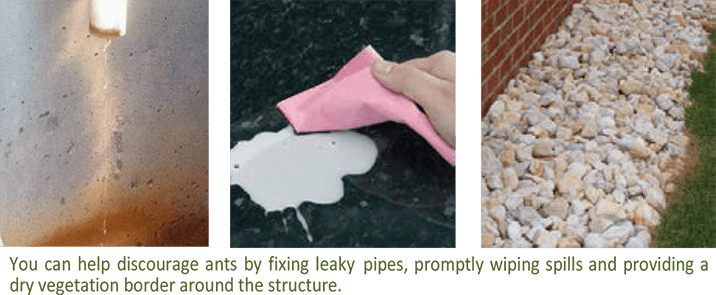Identification and Life Cycle
The three more common types of ants are Pharaoh Ants (Monomorium pharaonis), Odorous House Ants (Tapinoma sessile), and Pavement Ants. (Tetramoium caespitum).
The Pharaoh ant is very small in size, approximately 1/16 – inch long, light yellow to reddish-brown in color, almost transparent, with the hind portion above its abdomen a darker color.
The Odorous House ant is small, about 1/16 to 1/8 –inches long, brown to black in color with 12 segments to its antennae. When crushed, in defense these ants will emit an unpleasent odor similar to a rotten coconut.
The Pavement ant is similar in size to the odourous house ant. It’s 1/16 to 1/8 –inches long and brown to black in color. It can be identified by its narrow, parallel furrows in the head and thorax.
An ant’s life cycle consist of 4 stages; egg, larva, pupa and adult. Fertilized eggs produce female ants (queens, workers, or soldiers) and unfertilized eggs produce male ants. The entire life cycle usually lasts from 6 to 10 weeks. It is the wingless ants that are more commonly seen foraging for food, maintaing the nest or defending it.
These three species can continually produce new nests through a process called “budding”. When a colony gets too large, or is under stress, a small group usually consisting of workers, pre-adults and a single queen will move out to build a new colony.





Comments are closed.